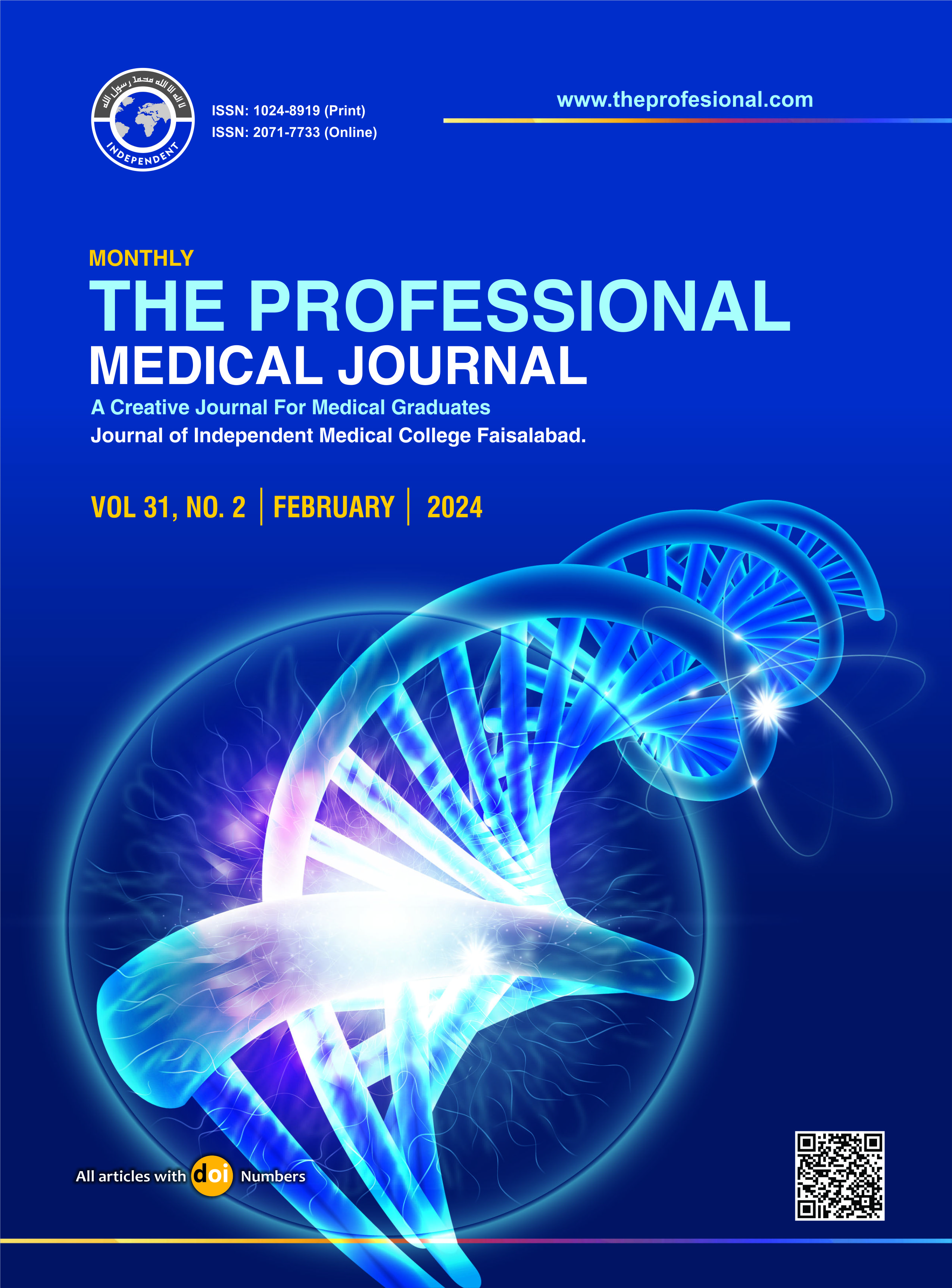The mean relative signal intensity ratio (SIR) difference in patients undergoing dynamic contrast enhanced magnetic resonance imaging (DCE MRI) for diagnosis of pituitary microadenoma.
DOI:
https://doi.org/10.29309/TPMJ/2024.31.02.7922Keywords:
Dynamic Contrast Enhanced, Pituitary Macro Adenoma, Signal Intensity RatioAbstract
Objective: To determine the mean relative signal intensity ratio (SIR) difference in patients undergoing dynamic contrast-enhanced magnetic resonance imaging (DCE MRI) for the diagnosis of pituitary microadenoma. Study Design: Descriptive, Cross-sectional study. Setting: Radiology Department, Allied Hospital I, Faisalabad. Period: 5th April 2021 to 4th October 2022. Material & Methods: A total of 65 individuals undergoing magnetic resonance imaging with dynamic contrast enhancement of pituitary gland of any gender aged between 20 and 60 years were encompassed. Patients taking any medication (antipsychotics, anti-depressants, opiates or antiemetics), hepatic or renal failure, uncontrolled DM and hypothyroidism were excluded. Senior radiologist interpreted the DCE MR images. Pituitary microadenoma was assessed according to operational definition. For all patients, a region of interest (ROI) was defined on the area displaying varying enhancement, specifically identified as zone A. Amongst the entire patient population, a second ROI was made in the pituitary gland's normal-appearing tissue identified as zone B. Signal intensity time curves were created for all patients using both SIR T and SIR P, and the disparity between SIR T and SIR P was calculated. Relative SIR difference was calculated. Results: In my study, mean relative signal intensity ratio (SIR) difference in patients undergoing the utilization of DCE MRI for detecting pituitary microadenomas was 0.212 ± 0.181. The relative SIR difference on DCE MRI in patients with pituitary microadenoma was 0.35 ± 0.12 and in patients without pituitary microadenoma it was 0.03 ± 0.01. Conclusion: This study concluded that estimation of pre contrast T1 signal intensity ratio of a potentially abnormal lesion in dynamic contrast-enhanced MRI can enhance the accuracy of the diagnosis for locating microadenoma.
Downloads
Published
Issue
Section
License
Copyright (c) 2024 The Professional Medical Journal

This work is licensed under a Creative Commons Attribution-NonCommercial 4.0 International License.


